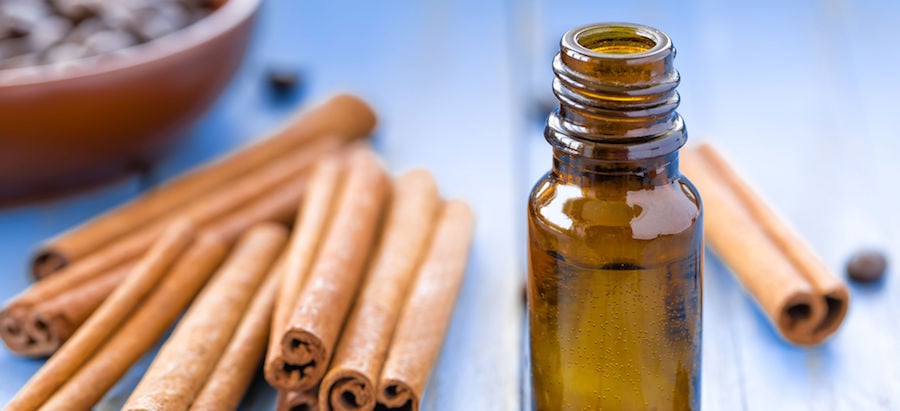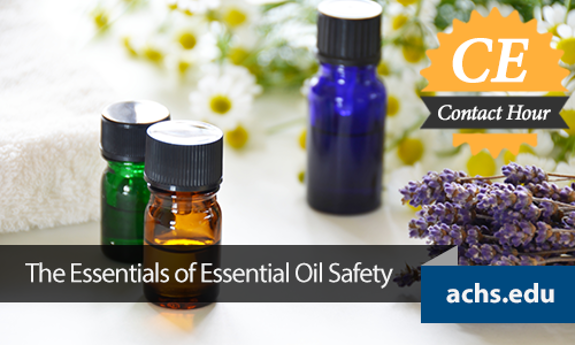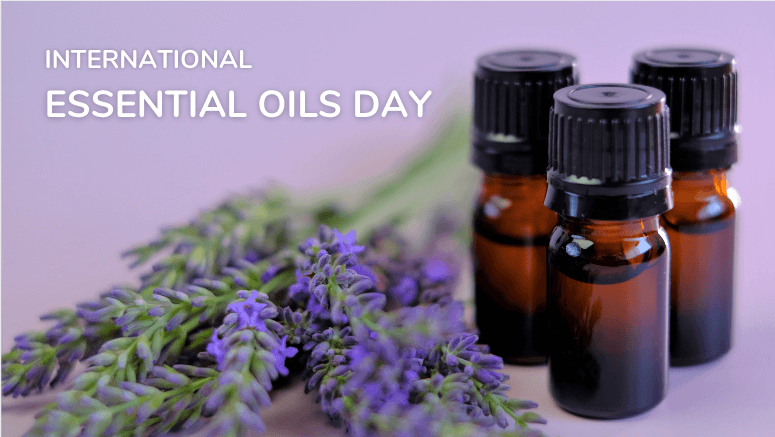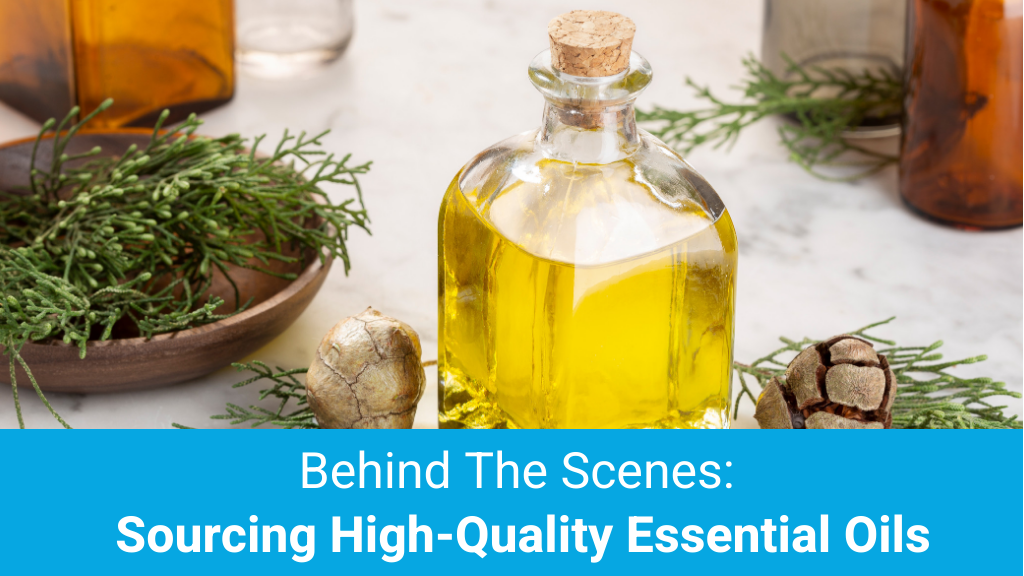If there’s one topic that has caused a lot of chatter in the aromatherapy community, it’s essential oil safety. And for good reason! There’s an exceptional amount of misinformation out there around these highly concentrated plant substances. So, before we enjoy the wide range of uses for essential oils, it’s important to discuss the major safety issues with aromatherapy.
There are many opinions about, and approaches to, how aromatherapy can be practiced safely and effectively. There’ve been heated debates over whether essential oils should ever be used neat (without dilution), whether they are safe to ingest, and even how they should be safely used in the bathtub. And we’ll cover all of those topics in this new blog series on essential oil safety.
To start, let’s define 6 key safety concepts that you should know as an aromatherapist or essential oil enthusiast:
#1 Celebrate the Individual!
Aromatherapists must honor individual composition. As we often repeat in the holistic health industry, everyone is an individual. So, it’s important to recognize that each person has a unique metabolism, vitality, and physical makeup. For example, an acceptable dose for a 45-year-old female in good health may not be appropriate for her 75-year-old frail uncle or for her 20-year-old daughter. Makes sense, right?
#2 Low Therapeutic Margin
Have you heard the saying, natural doesn’t mean non-toxic? This is true. Plants are powerful, which is why it’s important to know how much of an essential oil or herb is beneficial, and how much is toxic. You’ll hear the term low therapeutic margin used in both aromatherapy and herbal medicine. What this means is that the difference between a therapeutic dose and a harmful dose is a very small amount.
Even popular oils can have a low therapeutic margin, like basil Ocimum basilicum (L.) and clove Syzygium aromaticum (L.), and they should be used with caution. Basil’s toxic constituent is a phenol called methyl chavicol or estragole. Basil essential oil should not be used at all if someone has a history of estrogen-dependent cancer due to the estragole content. Use no more than three drops in the bath and mix with a dispersant such as whole milk or a base oil, and add the mixture once the bath is full, giving it a good swish to mix, as it causes skin tingling and sensitivity. Because of this, a skin patch test is an important safety step if you plan to administer topically. It can also cause skin sensitization (check out #5), which is more of an immune response. It should not be used if you are pregnant or breastfeeding and only at the recommended dose and dilution at other times.
The toxic constituent in clove is also a phenol called eugenol. Clove S. aromaticum may also cause irritation in some people, both internally and externally and a skin patch test is always recommended. If there is a reaction, reduce the dilution by half. This is another oils that should be used with caution in pregnancy (externally, only after first trimester).
As a general rule, all essential oils containing phenols can overload the liver if the stated dose or dilution is exceeded or if it is administered longer than the recommended time.
Bottom line, if you’re a beginner, build up some experience before venturing into using oils with low therapeutic margins. Finding alternatives is the key!
The important thing to remember about these plants: the difference between a helpful dose and a harmful dose can be mere drops! Don’t make the mistake of increasing dosage to increase benefits—less is more.
#3 Toxicity
Understanding toxicity is key to practicing aromatherapy safely. Essential oils with a low therapeutic margin often have a high toxicity rating. This depends on the constituent profile (chemical makeup) of the oil. Most often, a toxic reaction is due to incorrect dosage or administration. So, before you start using oils with a toxic rating, be sure to …
- Learn the therapeutic margin
- Check the Recommended Daily Dose (RDD)
- Perform a skin patch test
- Never use if pregnant or breastfeeding
- Never administer to children, infants, elderly, or those who are frail with weakened immunity
There are a few ways that a toxic reaction can manifest in the body, and we’ll define those below.
#4 Skin Irritation
Some oils can cause irritation if you use them undiluted. Essentially, skin irritation is the result of contact with an abrasive substance. It is localized, and the extent of the irritation depends on how much of the substance was used. As we mentioned, always confirm the RDD and follow those instructions exactly when using essential oils. If you’re a sensitive person or working with an essential oil with a low therapeutic margin, do a skin patch test to check for any irritation.
To avoid skin irritation, make sure your essential oils are correctly diluted with a carrier oil (also called a base oil). In general, we suggest avoiding using “neat” (direct/undiluted) essential oils on the skin. Start by erring on the side of caution. Begin with a high dilution ratio — we recommend 24 drops in four ounces of carrier oil (or 1%).
It’s worth repeating: when it comes to aromatherapy, less is more!
If your skin gets irritated, bathe the affected area with a carrier oil or full-fat milk. Remember, oil and water do not mix, so using a nonpolar substance like milk or oil is the best way to wash off the essential oil.
#5 Skin Sensitization
Sensitization is not irritation, although these terms are often confused. Let’s look at the definition of sensitization.
Sensitization is a systemic response involving the immune system. This reaction happens once the culprit essential oil has absorbed into the skin, and has been flagged by the body’s immune system. This reaction does not always occur on the first exposure to an essential oil, and can develop over time. Aromatherapists, massage therapists, natural product manufacturers, and anyone who works with essential oils are at a higher risk for these types of reactions and must be vigilant about their long-term exposure to essential oils.
In other words, even if you’ve never had a reaction before, your immune system could eventually “flag” a certain essential oil as potentially dangerous and then “sound the alarm” to your body. This presents as an allergic reaction.
There’s a dangerous myth that claims essential oils do not cause allergic reactions because they do not contain larger molecules, such as amino acids and proteins. This is false. Essential oils also contain smaller molecules, called haptens, which can bind to proteins and create haptenated proteins. These proteins can be detected by B-cells and trigger an immune response. Thus, essential oils can absolutely cause allergic reactions and should be used with care.
If an allergic reaction occurs, remove the essential oil with full-fat milk or a carrier oil, and stop using it.
The Safety Series
Now that you know a few key concepts for essential oil safety, we hope you’ll join us for more articles on this topic in the coming weeks. Subscribe to our blog and stay tuned for posts on safe methods for skin patch testing, phototoxicity, ingestion, and many more.
Disclaimer: This information is for educational purposes only and does not replace the need for legal advice. State laws vary greatly and change often. If you have a specific question about the laws in your state, check with your state or seek the advice of your attorney.
Disclosure of Material Connection: This blog may contain affiliate links. I am disclosing this in accordance with the Federal Trade Commission’s 16 CFR, Part 255: “Guides Concerning the Use of Endorsements and Testimonials in Advertising.”
This article is for informational purposes only. It is not intended to treat, diagnose, cure, or prevent disease. This article has not been reviewed by the FDA. Always consult with your primary care physician or naturopathic doctor before making any significant changes to your health and wellness routine.






